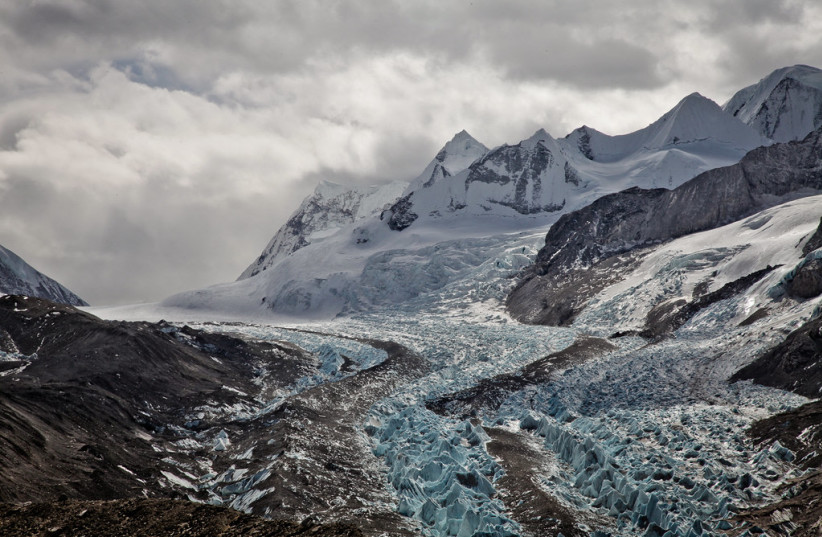After moving to Israel from London eight years ago, I began to expect that the first sounds I would ever hear wherever I went would inevitably be Hebrew: a cultural loudspeaker often shouting, “You are not alone; we are here.”
However, it was something of a shock to find that to be true in a sukkah, in the shadow of the Himalayan mountains, after stepping out from my hotel in Kathmandu, Nepal. I entered to find a rabbi on the phone, arranging helicopters to airlift Israelis stuck in poor weather in the Annapurna and Everest mountain ranges. I waited patiently. This was no ordinary country and no ordinary Rabbi.
Rabbi Chezky Lifshitz, originally from Bnei Brak, and his wife Chani, from Rehovot, have been running the Chabad Kathmandu House since it opened its doors in the Thamel area of the Nepalese capital, in 2000. With local help running the small synagogue, library, meat restaurant, Glattmandu, and dairy restaurant, Milkasher, Chezky is the driving force behind a slew of social, cultural and religious events providing a home away from home for between 10,000-15,000 Israeli backpackers, drawn to the country’s mountainous peaks for trekking each year.
Unlike most Chabad centers, Chezky and his team also provide Israeli or Jewish hikers with oxygen balloons and satellite devices for treks where there are no signals. Other events include hosting this year’s Sukkot celebrations. I was privileged to see what is thought to be the largest Passover celebration worldwide, with 1,500 participants each year.
With Everest towering above the Himalayan landscape, Nepal boasts the highest point on Earth, while the Dead Sea in Israel is recognized as the lowest and the gap between the two countries would appear as wide.


What is Nepal like?
Almost 3,000 miles away, Hindu-majority Nepal is a landlocked country sandwiched between India, Tibet and Bangladesh. It has no native Jewish population and is seven times the size of Israel. The start-up ecosystem of Kathmandu is ranked 529th globally, according to StartUp Blink, while Israel has more start-ups per capita than anywhere else on Earth.
And yet, the relationship between Nepal and Israel continues to grow. Diplomatic ties were established in 1960, after Nepal’s late prime minister, B.P. Koirala, paid an official visit to Israel and many more two-way visits have followed. This past May, in honor of the 62-year friendship, Yair Lapid said in a video message, “For three decades, Nepal was the only country in the region to maintain diplomatic relations with Israel and Israel seeks out new opportunities to cooperate with Nepal, considering Nepal a great friend and partner.”
Agriculture is where the partnership has traditionally been focused, as it remains Nepal’s principal economic activity, employing about 65% of the population. Over the years, Israel has provided Nepal with short-term scholarships in agriculture, education, rural development and water resources.
The Jerusalem-based NGO Tevel B’Tzedek previously arranged for many Israelis to travel to remote Nepalese villages and provide help with efficient forms of irrigation and agriculture. Israel continues to be an attractive destination for Nepali students who are keen to learn the advanced techniques and technologies that have helped Israeli agriculture flourish in the Middle Eastern desert and which are, today, helping Nepal’s neighbor and primary trading partner, India.
While I sat in the Sukkah thinking of how this relationship had been harvested, I was grateful that Chabad had managed to provide a temporary dwelling for this wandering Israelite.
I did wonder what they would do for Hanukkah, however, and if they could possibly match the sheer variety of donuts on sale in Israel in just a few weeks. I guess if they can arrange helicopter rescues, I wouldn’t put it past them.
For Jewish visitors on a Nepal adventure, contact Chabad Nepal at https://chabadnepal.com for more.
The author is a Manchester, England-born freelance travel writer living in Ashkelon.
